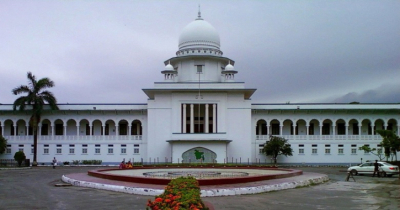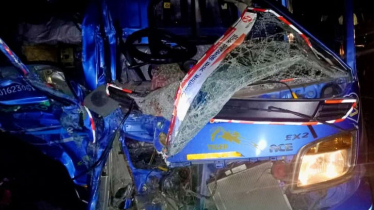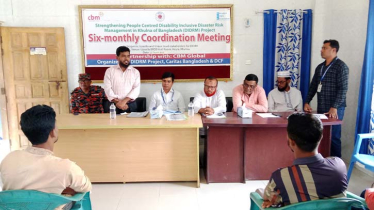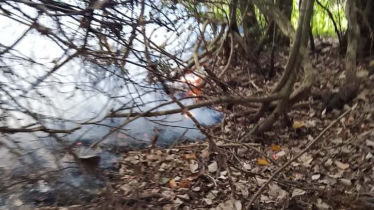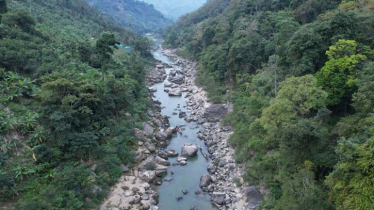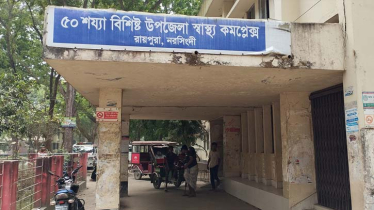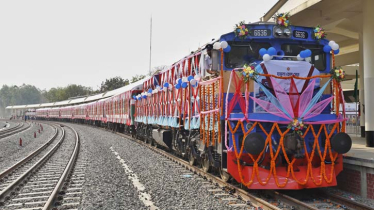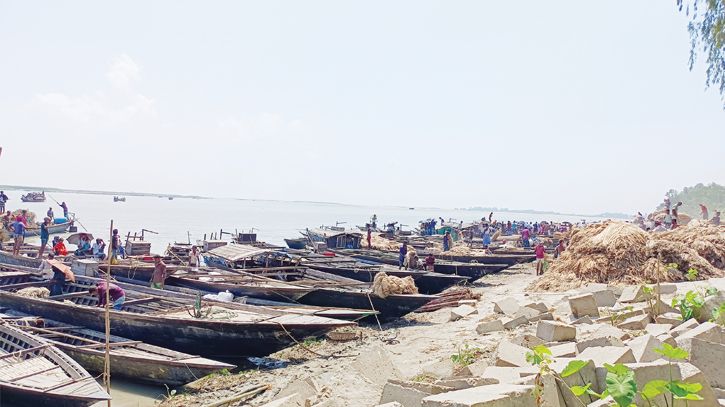
A continuous line of dinghy boats stretches along the Brahmaputra River bank, serving as the sole mode of transportation for residents in the remote Char region to reach the haat. Photo: Messenger
For a century now, the traditional haat established along the Brahmaputra banks in Chilmari, Kurigram, remains the focal point of trade. Thousands of people journey from Char to participate in the bustling marketplace, engaging in buying and selling activities.
A continuous line of dinghy boats stretches along the riverbank, serving as the sole mode of transportation for the remote Char region residents. Upon closer inspection, the sight unfolds with goods being unloaded from each boat, showcasing a collective effort to handle various products, including livestock like cows and goats, often carried by individuals on their hands or heads.
These agricultural products originate from the Brahmaputra's pastures, emphasizing the perpetual cycle of fodder production and its market demand, encapsulated in the vibrant scene of Chilmari's Jordagach market. Agriculture stands as the primary source of livelihood for the local populace.
The recurring spectacle of trading agricultural produce in Chilmari's Jorgach market, occurring twice a week, has persisted for many years. The market, revered as the oldest and legendary haat, convenes on Sundays and Wednesdays.
Spanning across the Brahmaputra basin, Jorgach Hat attracts thousands, offering a livelihood to those who converge at the riverside. Farmers and residents find a dynamic market where they sell one product to purchase another, catering to the diverse needs of the Char inhabitants.
For decades, Jorgach Hat has been the primary market for selling agricultural products from Charar land. Beyond crops, it stands out as a prominent animal market in the region, witnessing significant livestock transactions every week.
The market features livestock from pastures and an array of agricultural products like rice, jute, sesame seeds, almonds, chillies, and onions. Not confined to the Char region, people from the plains are drawn to this market due to its affordability and accessibility. Additionally, the products find their way beyond the district, contributing to the government's annual revenue of approximately one and a half crore rupees from hut leases.
The impact of climate change has left its mark on this historical market, leading to several relocations over the past century due to Brahmaputra erosion. Originally situated in the Karaibarisal area of Chilmari Union, the Jorgach market attracted traders from India until around 1920 when the union shifted due to erosion. Post-independence, the market found its current location in the Jorgach area.
Despite the changes, the haat in Chilmari endures, perched on a portion of the char that rises on the Brahmaputra's chest. The rhythmic sound of the river's waves and the soothing breeze provide a serene backdrop for both traders and visitors alike.
Messenger/Fameema

